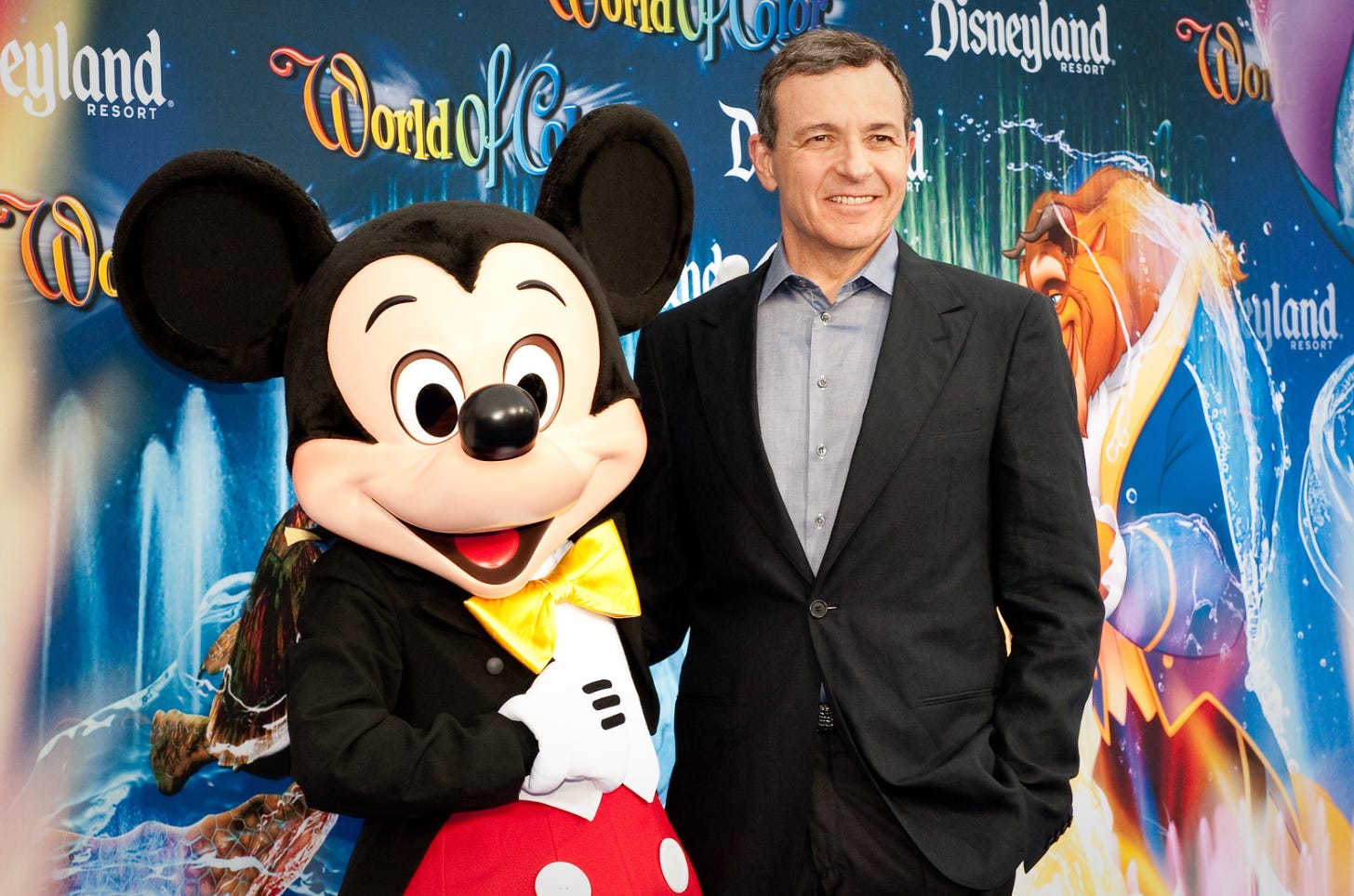Bob Iger’s Direct-to-Video Brand Problem
“The Little Mermaid” remake highlights how the CEO has led Disney into the same brand crisis the company endured when previous CEO Michael Eisner reoriented the company around low-budget VHS sequels.
Photo via Flickr, by Josh Hallett
This weekend, Disney releases their latest live-action remake of a classic cartoon. Many expect The Little Mermaid to earn hundreds of millions–if not billions–of dollars. In the short-term, it’s a success, but it marks a growing brand identity crisis for the Mouse House reminiscent of when Disney CEO Michael Eisner led the company off a cliff in the Bush era.
Unlike during the Eisner era, the Walt Disney Company currently houses four film brands: Pixar, Marvel, Star Wars parent Lucas Films, and Disney. Say what you will about the decline of Marvel and Star Wars, but they’re at least taking some risks. For every flop, they’ve given us Grogu and Guardians of the Galaxy. (Pixar has such a complicated branding situation, let’s set that aside for another day.) The same cannot be said for the live-action Disney brand, which runs on remakes of animated classics. The strategy goes back over a decade to when Tim Burton’s Alice in Wonderland (2010) surprisingly grossed over a billion dollars. Soon came Cinderella (2015), Beauty and the Beast (2017), Cruella (2021), The Lion King (2019), and other live-action remakes.
Sensitive to brand fatigue, Disney announced in 2017 that they would only remake animated films released before 2000. In 2017, they could afford the announcement; Marvel was headed towards Endgame (2019), and streaming had yet to wreak ESPN’s cash flow. Disney didn’t need to rehash their animated classics. They had several cash supplies.
That is no longer the case. As Scott Galloway explains, Disney’s gross margin collapsed from 16 percent in 2018 to 4 percent in 2023. They can only afford safe bets, so at a recent shareholder event, Iger welcomed the Rock to announce a remake of 2016’s Moana.
In the short term, it’s a smart move, but as Eisner learned the hard way, sure bets become long-term brand liabilities. In the nineties, Eisner commissioned executive Bob Chapek to run a direct-to-video unit. Together, they revolutionized home video, first releasing a direct-to-video sequel of Aladdin (1992) called The Return of Jafar (1995). According to the Chicago Tribune, it earned over $300 million on a low budget. Adjusted for inflation, this would be $590 million more than Star Wars: The Rise of Skywalker (2019) or The Lion King (2019) remake earned in the US.
Predictably, Jafar gave way to Lion King II: Simba’s Pride (1998) and a barely remembered The Little Mermaid II: Return to the Sea (2000), in which Ariel’s human daughter longs to live underwater. They generated millions, and at first, Disney only produced junk sequels to modern fare. The problem was they needed to keep the cash flowing, and by 2000, they had nearly run out of nineties flicks. So they broke a taboo and resorted to direct-to-video sequels to Walt’s classics, beginning with the blasphemous Lady and the Tramp II: Scamp’s Adventure (2011). These atrocities coincided with a collapse in Disney's animated theatrical output. Whereas Mulan (1998) grossed over $300 million, Fantasia 2000 earned $90 million.
Disney needed that Scamp money badly, and in 2002 began releasing these low-budget sequels in theatres. Unfortunetly for Eisner, everything from Return to Neverland (2002) to The Jungle Book II (2003) bombed, likely because audiences had begun to associate the sequels with poor quality.
Disney is in a similar place today. Last year, Stranger Worlds flopped harder than any Disney flicks in recent memory, partially because other recent Disney films, like Raya and the Last Dragon (2021), disappointed audiences. Live-action remakes may temporarily increase the bottom line, but they cause brand damage.
When brands decline, CEOs love to hire a thousand publicists and marketers. Communications experts can turn around a brand when the product quality is good, but no amount of earned media can turn-around junk’s reputation.
Iger may believe he’s beyond reproach, but so did Eisner. He should go ask his old boss how the direct-to-video sequels era ended: With the decline in quality came a decrease in sales, which led to a reduction in stock value, with Comcast nearly buying Disney in a hostile bid.
This isn’t to say Disney can’t remake classics. (Cruella worked because it was an original take on old IP.) But the wishing well is running out of animated films to turn live-action. In a few years, Frozen (2011) will be the last film Iger can take out of the well and remake. Disney needs to refill the well, so its studio has something to remake in the future and its communications team has something to promote. Iger needs to generate new ideas so his flacks and marketers have something of quality to sell to the public. That’s the only way to stop his company’s brand from being discounted like a used VHS tape.
The BCC Newsletter is the weekly newsletter for BCC Communications, a boutique public relations firm that takes a journalistic approach to public relations. BCC Communications’s clients have appeared on the cover of the Wall Street Journal and on CNN, Fox News, The Kelly Clarkson Show, MSNBC, the New York Times, the New York Post, TMZ, The View, Vogue, and more top publications.



